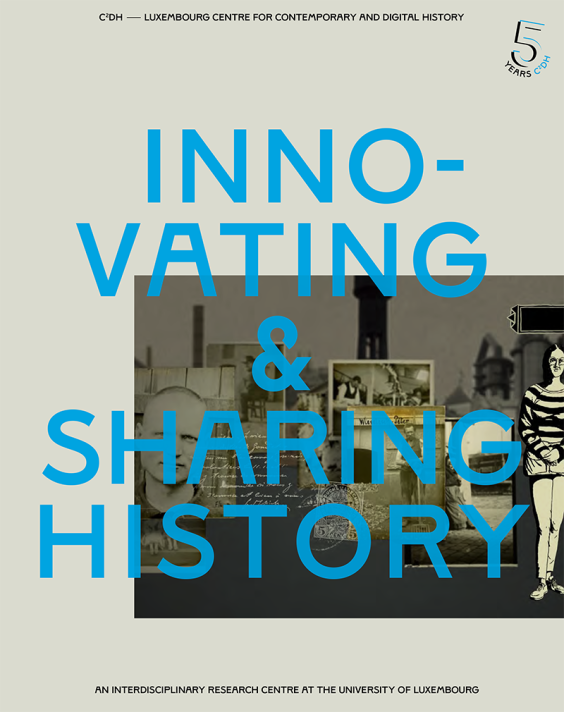How can we get the general public interested in contemporary history? That question was the starting point for the new brochure produced by the Luxembourg Centre for Contemporary and Digital History, a research centre at the University of Luxembourg.
The outcome, the C²DH anniversary brochure "5 years in review", has been rewarded by DNA Paris Design Award and Muse Creative Award.
In the field of academic research, brochures generally contain lengthy texts about the methodology behind research projects. They are full of scholarly terminology and few images are used to illustrate the ideas.
The C²DH was keen to make contemporary history research accessible and attractive to a broad public. The idea was to harness the power of images to attract the attention of history novices and spark an interest in the centre’s research topics. The aim of the brochure is to elicit an emotional response from readers as they look at the images, making them want to find out more. The systematic use of QR codes gives readers an opportunity to go further and explore the centre’s virtual exhibitions, open access publications, digital applications and history-themed games. The brochure serves as a teaser to encourage as many people as possible to find out about the research performed by historians.
Why is this strategy important for the C²DH? Public history and academic outreach are an integral part of the C²DH’s identity. Sharing knowledge with the general public is crucial and contributes to the centre’s social and cultural impact in Luxembourg and beyond its borders.

The C²DH also wants to involve the public in its research via oral history and crowdsourcing campaigns. Who knows more about the recent past than those who were involved in or witnessed the events that occurred? Interviews with individuals who lived through episodes in contemporary history offer historians new perspectives that provide a useful complement to the official record. The use of private archives can also be highly instructive. People who might never have opened the pages of an academic publication will be tempted to browse through this brochure, and they may then decide to contact the historians to share their personal history.
So with its innovative approach and page layout, the brochure has a twofold aim: to spark people’s interest in contemporary history and to promote public engagement with history research. This project, which combines quality content and visual design, was only made possible thanks to close cooperation between the C²DH and Guido Kröger, director of ampersand.studio and an expert in graphic design, who has professional experience in both journalism and tourism.
The brochure, published to mark the fifth anniversary of the C²DH, contains five texts that present five innovative approaches to practising and sharing history. It also offers readers an opportunity to familiarise themselves with the centre’s different research areas, again with the underlying aim of sparking an interest that will encourage them to find out more...



